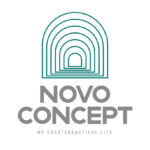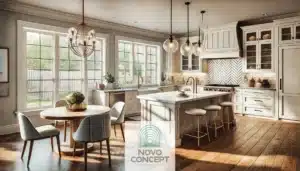Mold and mildew are two common problems in many homes, especially in areas with high humidity. Effective mold and mildew prevention is essential for maintaining a healthy living environment. This article explores the differences between mold and mildew, their health implications, and strategies to prevent their growth in your home. Understanding how to keep your spaces dry and clean can help you enjoy a mold-free environment.
Understanding Mold and Mildew
Mold and mildew are both types of fungi that thrive in damp conditions. While they may seem similar, they have distinct characteristics and health implications.
What is Mold?
Mold typically appears as black, green, or even blue patches and can grow on various surfaces, including walls, floors, and ceilings. It thrives in areas with high humidity and poor ventilation. Understanding mold is crucial for effective mold and mildew prevention.

What is Mildew?
Mildew, on the other hand, is usually powdery and white or gray. It tends to grow on organic materials and can often be found in bathrooms and basements. Recognizing mildew early is important for implementing effective mold and mildew prevention measures.
By understanding these differences, homeowners can take the necessary steps to address mold and mildew issues effectively.
Health Risks Associated with Mold and Mildew
Both mold and mildew can pose health risks, particularly for individuals with respiratory issues, allergies, or weakened immune systems. Exposure to mold can cause a variety of health problems, including:
- Respiratory problems
- Allergic reactions
- Skin irritation
- Sinus congestion
Implementing effective mold and mildew prevention strategies is crucial to mitigating these health risks in your home.
Tips for Effective Mold and Mildew Prevention
1. Maintain Proper Ventilation to Combat Mold and Mildew
Proper ventilation is one of the most effective ways to prevent mold and mildew. Ensure your bathroom has adequate airflow by using exhaust fans, opening windows, or keeping doors slightly ajar during and after showers.

2. Control Humidity Levels for Mold and Mildew Prevention
Keeping humidity levels below 50% can significantly reduce the chances of mold and mildew growth. You can use dehumidifiers in particularly damp areas and regularly monitor humidity levels with a hygrometer. Effective mold and mildew prevention requires proactive humidity control.
3. Regular Cleaning to Reduce Mold and Mildew
Implement a regular cleaning routine to eliminate mold spores and prevent their growth. Use vinegar or baking soda as natural cleaning agents to wipe down surfaces prone to dampness. Consistent cleaning is key in your mold and mildew prevention efforts.
4. Inspect for Leaks to Prevent Mold and Mildew
Regularly check your plumbing for leaks, as these can create ideal conditions for mold and mildew. Fix any leaks promptly to prevent moisture accumulation. This step is crucial in your overall mold and mildew prevention strategy.
5. Choose Mold-Resistant Materials for Bathrooms
When renovating or building, consider using mold-resistant materials. For instance, mold-resistant drywall and paint can significantly reduce the risk of mold growth. Utilizing these materials is an effective mold and mildew prevention measure.
6. Utilize Natural Light to Deter Mold and Mildew Growth
Where possible, maximize natural light in your bathroom. Sunlight can help keep the space dry and inhibit mold growth. Enhancing natural light is another excellent strategy in your mold and mildew prevention plan.
7. Use Non-Porous Surfaces to Combat Mold and Mildew
In your bathroom renovations, opt for non-porous surfaces like acrylic, which do not absorb moisture and are less likely to harbor mold and mildew. Selecting appropriate materials is essential for effective mold and mildew prevention.
8. Store Items Properly to Prevent Mold Growth
Avoid clutter in your bathroom. Store towels and other items in dry areas, as damp towels can contribute to mold growth. Use cabinets with sealed surfaces to keep moisture at bay. Proper storage solutions play a vital role in mold and mildew prevention.
9. Monitor Indoor Plants for Humidity Control
If you keep plants indoors, be cautious as they can contribute to humidity. Ensure proper drainage and avoid overwatering to minimize mold risk. Being mindful of indoor plants is another aspect of mold and mildew prevention.
10. Get Professional Help for Persistent Mold Issues
If you find persistent mold or mildew despite your best efforts, consider seeking professional help. Companies specializing in mold remediation can assess your home and recommend solutions tailored to your needs. Their expertise is invaluable for your prevention strategy.
Conclusion: Emphasizing Mold and Mildew Prevention
Effective prevention is essential for maintaining a healthy home environment. By implementing these strategies, you can significantly reduce the risk of mold and mildew growth in your bathroom and other areas of your home.
For more information on how to keep your home safe from mold and mildew, or if you need assistance with bathroom renovations, contact us at Novo Concept. Our team is here to help you create a beautiful, safe, and mold-free living space.




